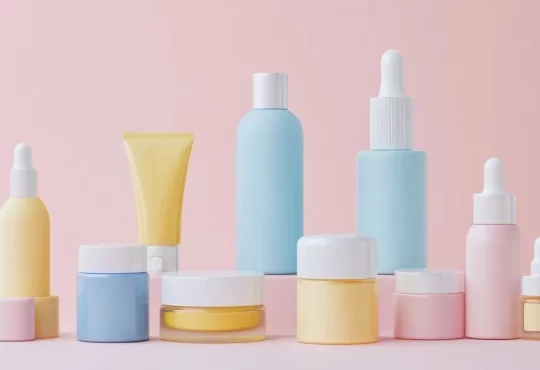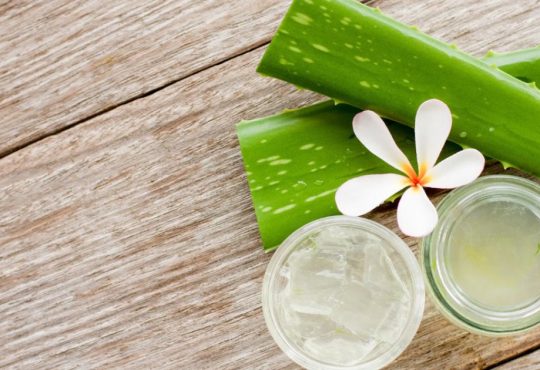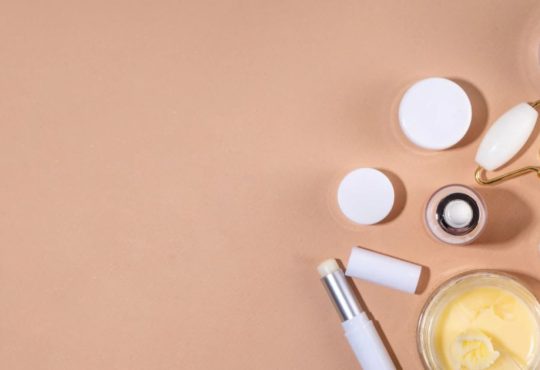Homemade night creams are a simple and satisfying way to nourish skin while avoiding unnecessary additives. In 2025, many people are returning to DIY beauty for transparency, sustainability, and personalization. This guide covers 15 easy, natural night cream recipes, explains which ingredients work for different skin types, and offers tips on storage, safety, and where to source quality supplies. Practical context and a few vetted brand suggestions help bridge the gap between kitchen experiments and reliable skincare results.
Why Homemade Night Creams Work
Night creams are designed to lock in hydration and support skin repair while you sleep. Natural ingredients like plant butters, oils, and humectants provide barrier support, essential fatty acids, and gentle antioxidant protection. Making your own cream gives you control over ingredients and lets you avoid fragrances, preservatives, or actives that can irritate sensitive skin. For best results, pair DIY creams with daily sunscreen and proven actives as needed. Editorial roundups and DIY guides in 2025 continue to highlight simple, gentle recipes built around shea butter, jojoba oil, rosehip oil, and aloe vera.
Safety First: Basics Before You Start
Before diving into recipes, keep these safety rules in mind:
- Patch test new formulations for 48 hours on the inner wrist.
- Use clean tools and sterilized containers to reduce contamination risk.
- Avoid adding water without a preservative. Water allows bacteria and mold to grow. If a formula contains water or aloe gel, use it within a week and store it in the refrigerator.
- If you want a longer shelf life, consider using natural preservatives formulated for cosmetics or making oil-only balms that are shelf-stable.
- Keep essential oils at safe dilution levels. For face products, 0.25 to 1 percent is a common range. Pregnant people should consult resources about essential oil safety.
These precautions let home formulations stay safe and effective for regular use. DIY guides in 2025 consistently emphasize hygiene and reasonable shelf life for home products.
Ingredients to Know and Where to Buy
Common base ingredients used across these 15 recipes include:
- Shea Butter. Emollient and rich in fatty acids.
- Cocoa Butter. Firming, deeply moisturizing.
- Coconut Oil. Highly moisturizing but comedogenic for some. Use with caution on acne-prone skin.
- Jojoba Oil. Lightweight and suitable for many skin types.
- Rosehip Oil. Rich in linoleic acid and vitamin A precursors; great for texture and marks.
- Argan Oil. Lightweight and antioxidant-rich.
- Sweet Almond Oil. Nourishing and versatile.
- Aloe Vera Gel. Hydrating and calming; watch shelf life.
- Vegetable Glycerin. A humectant that draws moisture into the skin.
- Beeswax or Candelilla Wax. For texture and barrier support in balms.
- Vitamin E Oil. Antioxidant and mild preservative.
• Essential Oils. For fragrance and therapeutic support. Use sparingly.
Quality suppliers like NOW Foods, Aura Cacia, SheaMoisture for butters, and small batch apothecaries are common sources in 2025. Look for cold-pressed oils and unrefined butters if you want maximum nutrient content.
How To Use These Creams
Apply a nickel-sized amount to cleansed skin at night. If a cream feels heavy, use slightly less or reserve it for dry areas. Store oil-based balms in a cool, dark place. If a cream contains aloe or other water-based components, keep it refrigerated and use it within seven days unless a preservative system is included.
The Top 15 Natural Night Cream Recipes
All recipes are simple, customizable, and written for a small jar (about 2 ounces). Adjust proportions for larger batches. Measure with clean spoons and sterilize jars with boiling water or alcohol.
1. Shea Nourish Night Balm (Dry Skin)
Ingredients
- 1 tbsp shea butter
- 1 tsp coconut oil
- 1 tsp sweet almond oil
- 3 drops of vitamin E
Method: Melt shea and coconut with a double boiler, remove from heat, stir in almond oil and vitamin E. Pour into a jar and cool.
Why it works: Shea repairs the barrier and deeply moisturizes, while almond oil provides steady nourishment.
2. Lightweight Jojoba Repair Cream (Normal to Oily Skin)
Ingredients
- 1 tbsp jojoba oil
- 1 tsp beeswax
- 1 tsp aloe vera gel (use immediately)
- 2 drops lavender essential oil
Method: Melt beeswax in jojoba, remove from heat, whisk in aloe, pour into jar, and refrigerate overnight. Use within one week.
Why it works: Jojoba mimics skin sebum and is less likely to clog pores.
3. Rosehip Renewal Night Oil (Texture and Scarring)
Ingredients
- 1 tbsp rosehip oil
- 1 tsp argan oil
- 2 drops of vitamin E
Method: Mix oils in a small bottle. Apply 3 to 4 drops at night.
Why it works: Rosehip is rich in linoleic acid and provitamin A compounds that support texture improvement.
4. Hyaluronic Boost Gel-Cream (Hydration Focus)
Ingredients
- 1 tbsp aloe vera gel
- 1 tsp vegetable glycerin
- 1 tsp rose water
- 2 drops jojoba oil
Method: Whisk ingredients together and store in the refrigerator. Use within 7 days.
Why it works: Glycerin and aloe pull moisture into skin for overnight plumping.
5. Cocoa Comfort Night Butter (Very Dry Skin)
Ingredients
- 1 tbsp cocoa butter
- 1 tsp shea butter
- 1 tsp coconut oil
- 2 drops frankincense essential oil
Method: Melt butter and oil, stir essential oil in, pour into a jar, and cool.
Why it works: Rich butters seal moisture and smooth crepey skin.
6. Calming Oat + Chamomile Cream (Sensitive Skin)
Ingredients
- 1 tbsp shea butter
- 1 tsp oat-infused oil (made by infusing oats in carrier oil)
- 1 tsp aloe vera gel (short-lived)
- 2 drops of chamomile essential oil
Method: Combine oils and butters, cool, then gently incorporate aloe and essential oil. Refrigerate and use quickly.
Why it works: Oat oil soothes inflammation, and chamomile calms redness.
7. Green Tea Antioxidant Night Cream (Environmental Protection)
Ingredients
- 1 tbsp shea butter
- 1 tsp jojoba oil
- 1 tsp cooled green tea concentrate
- 2 drops of vitamin E
Method: Melt butter and oil, cool slightly, whisk in green tea and vitamin E. Use within a week in the fridge.
Why it works: Green tea adds antioxidants to fight environmental stressors.
8. Gel-To-Butter Overnight Hydrator (Combination Skin)
Ingredients
- 1 tbsp aloe vera gel
- 1 tsp shea butter
- 1 tsp squalane or jojoba
- 2 drops rosemary essential oil
Method: Melt shea and combine while warm with aloe and squalane. Store in the fridge short-term.
Why it works: A light, non-greasy finish with barrier support.
9. Licorice Brightening Night Cream (Tone Support)
Ingredients
- 1 tbsp shea butter
- 1 tsp sweet almond oil
- 1 tsp licorice root-infused oil or a few drops of licorice extract
- 1 drop lemon essential oil (avoid sun exposure)
Method: Melt oils and butters together, mix in extract. Use at night only and avoid daytime sun exposure without SPF.
Why it works: Licorice can support an even tone when used cautiously.
10. Avocado Repair Balm (Nutrient Rich)
Ingredients
- 1 tbsp avocado oil
- 1 tsp beeswax
- 1 tsp shea butter
- 2 drops of vitamin E
Method: Melt, mix, cool. Apply to dry patches or the full face.
Why it works: Avocado oil is rich in oleic acid and fat-soluble vitamins.
11. Honey + Almond Overnight Mask (Brightening Treat)
Ingredients
- 1 tbsp raw honey
- 1 tsp sweet almond oil
- 1 tsp hemp seed oil
Method: Mix and apply a thin layer at night, rinse off in the morning. Use within 7 days.
Why it works: Honey is humectant and antimicrobial, great for a weekly boost.
12. Squalane Lightweight Night Serum (All Skin Types)
Ingredients
- 1 tbsp squalane
- 3 drops rosehip oil
- 2 drops of vitamin E
Method: Mix in a dropper bottle and apply 2 to 3 drops each night.
Why it works: Squalane is stable, non-comedogenic, and locks in hydration.
13. Matcha Firming Night Oil (Antioxidant Rich)
Ingredients
- 1 tbsp jojoba oil
- 1 tsp matcha-infused oil or 1/8 tsp matcha powder blended with oil
- 2 drops of vitamin E
Method: Infuse oil with matcha for 24 hours, strain if needed, mix, and store in a dark bottle.
Why it works: Matcha provides polyphenols for antioxidant support.
14. Calendula Soothing Night Cream (Irritated Skin)
Ingredients
- 1 tbsp calendula-infused oil
- 1 tsp beeswax
- 1 tsp shea butter
Method: Melt, combine, and cool. Use on reactive or redness-prone areas.
Why it works: Calendula has long been valued for calming the skin.
15. Simple Olive Oil Night Cream (Minimalists)
Ingredients
- 1 tbsp extra virgin olive oil
- 1 tsp beeswax for texture if desired
- 1 drop of vitamin E
Method: Warm and combine, cool. Use sparingly if acne-prone.
Why it works: Olive oil is nourishing and widely available.
Tips for Customizing Formulas
- For acne-prone skin, favor jojoba, squalane, or grapeseed over coconut or olive oil.
- For dry aging skin, increase butters like shea or cocoa.
- For sensitive skin, skip citrus essential oils and stick to chamomile or lavender at low dilutions.
- To make a water-based cream safely, learn about cosmetic preservatives or make small, single-use batches.
Shelf Life and Storage
Oil and butter-based balms last longest, often several months if kept cool and clean. Any formula with aloe or water should be refrigerated and used within seven days unless a preservative is added. Dark glass jars protect light-sensitive nutrients like carotenoids. If a product smells rancid, discard it. Many DIY pages in 2025 stress short batch making and hygienic techniques to prevent contamination.
Ready-Made Natural Products to Compare
If you prefer a finished natural night cream or want reference points, look for brands that prioritize simple, cold-pressed oils and clinical transparency. In 2025, reviewers recommended several natural options across budgets. Examples to explore include Pai for rosehip-focused oils, Trilogy for classic rosehip formulas, and SheaMoisture for butter-rich treatments. Use these as benchmarks when testing DIY results.
Crafting the Perfect Natural Night Cream
Homemade night creams are an accessible way to customize skincare while using only natural ingredients. They can provide genuine hydration, barrier support, and gentle antioxidant protection. Follow hygienic practices, be realistic about shelf life, and pair these creams with sunscreen and other proven treatments for the best long-term results. Starting with a single simple balm or oil helps build confidence and lets you refine formulas that match your skin and lifestyle. If you want a printable recipe card or a shopping list of tested suppliers for the ingredients above, say the word, and a ready-to-use guide will be prepared.





